Cold exposure can kill you or leave you miserable all winter long. So why don’t you just turn up the heat? Well, heating your home can be expensive, or take up all you time. I will be presenting some ideas that will save you time and effort this winter, along with cutting down on your heating bill.
The approach is to look at how nature deals with cold, then apply the lessons in pursuit of the following objectives:
- Preserve the heat you have
- Keep the cold out
- Minimize the heating needed
- Create winter comfort
Adding Small Gains
My goal with this article is to keep your money in the bank, while keeping you warm and snug. There isn’t a single solution, like “ONE BIG THING” you can do that will make all the difference.
That is why my approach is to suggest at least 10 small things that you can do without too much effort. When added together, these small things will make a big difference.
Cold Sinks #1
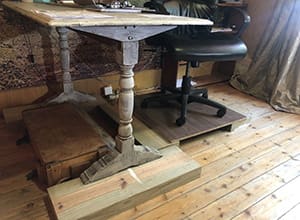 The idea of a cold sink is inspired by Igloos. The floor inside an Igloo is never flat, but has three levels. The highest level for sleeping and living. The middle level for cooking. The lowest level is called the cold sink. The coldest air will come to rest in the cold sink.
The idea of a cold sink is inspired by Igloos. The floor inside an Igloo is never flat, but has three levels. The highest level for sleeping and living. The middle level for cooking. The lowest level is called the cold sink. The coldest air will come to rest in the cold sink.
Since you can’t “dig” a cold sink in your house, you will need to “rise” above the cold.
You can use platforms and bricks to achieve this. E.g. Raise your work desk and chair. This can be done by placing bricks under the desk legs and raising a small platform for the chair. You can do platforms in your kitchen, your bathroom, anywhere you will be spending a lot of time.
Principle: Coldest air accumulates in the cold sink.
Trapped Air
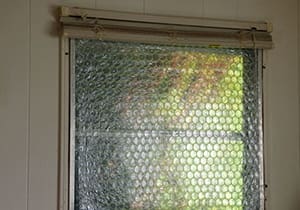 Snow and compacted snow both have insulating properties. This is due to thousands of super tiny air pockets trapped inside the snow. The aim is to apply the principle of air trapped in pockets by using bubble wrap and egg trays.
Snow and compacted snow both have insulating properties. This is due to thousands of super tiny air pockets trapped inside the snow. The aim is to apply the principle of air trapped in pockets by using bubble wrap and egg trays.
#2 – Use bubble wrap to insulate windows. You can tape it directly to the glass.
#3 – Apply bubble wrap and egg trays to boards of Masonite or plywood. You can then use the boards to increase insulation where cold is seeping in.
Principle: Large exposed surfaces, even double insulated windows, still allow convection, whereas air pockets don’t.
Fireplace
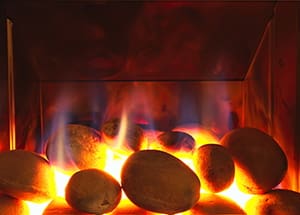 Fireplaces are great for heating rooms, but a lot of heat is lost through the chimney. The objective is to maximize your heat harvest from your fire.
Fireplaces are great for heating rooms, but a lot of heat is lost through the chimney. The objective is to maximize your heat harvest from your fire.
#4 – Place rocks on a grid above the fire. Once they are heated, you can transfer them into a steel bucket and place inside a room. The stones will radiate their heat, warming the room in the process.
Principle: Maximizing heat harvest from fire through capturing heat in rocks and releasing the heat into rooms where there is no fireplace.
Limiting Movement
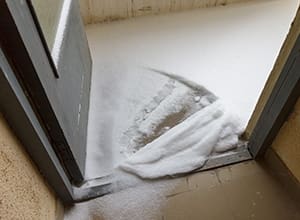 The more time you open and close your refrigerator door on a hot summers day, the longer the cooling system will need to run. Letting cold air into a warm room has the same effect. You want to minimize the number of times you need to open doors.
The more time you open and close your refrigerator door on a hot summers day, the longer the cooling system will need to run. Letting cold air into a warm room has the same effect. You want to minimize the number of times you need to open doors.
#5 – Bring as many supplies in from outside as possible. Every time you go outside, your house loses heat.
#6 – Store the items in the rooms where they are to be used. Don’t store anything in rooms you are sealing off for the winter.
#7 – Hang a weighted tarp in front of all outside doors. When entering or exiting your home, make sure at least one is closed before opening the other.
Principle: Limit movement and transfer of heat from warm rooms to cold ones.
Reducing Air Volume
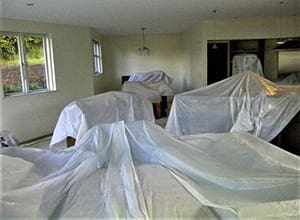 Reducing the air volume inside a room will reduce the amount of heat needed to raise the temperature of the room.
Reducing the air volume inside a room will reduce the amount of heat needed to raise the temperature of the room.
#8 – Move a double bed, a desk and closet out of a room you’re sealing up for the winter, into a room where you will be living. Cover them with a sheet. This can reduce a room’s volume by up to 8 Square meters or 280 cubic feet.
Another way to reduce air volume is by changing the shape of a room. Igloos get narrower toward the top. This means less air to heat than in a square room.
#9 – Run a rope across your room, from above your bed to where the radiator or heat enters your room. Drape a large section of canvas or cotton or the over the rope, creating a triangular tent shaped tunnel (like a canopy). This will keep the heat trapped around you bed area, while you sleep snugly.
Principle: Reduce the volume of air that has to be heated.
Heat Absorbing Dark Colors
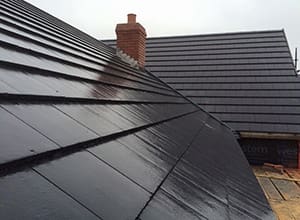 #10 – Black, dark grey or navy blue surfaces absorb more heat from the sun than light colored surfaces. Painting surfaces that receive sunlight in the winter, can help heating your house. Painting your roof black or even dark brown, will heat up the air above your sealing and help keep your house warm.
#10 – Black, dark grey or navy blue surfaces absorb more heat from the sun than light colored surfaces. Painting surfaces that receive sunlight in the winter, can help heating your house. Painting your roof black or even dark brown, will heat up the air above your sealing and help keep your house warm.
Principle: Dark colors absorb energy.
Dark Colors Exterior Preparation
#11 – Painting exterior walls black could be a bit much, but other dark colors could increase the energy absorption potential. Particularly for walls that will receive sunlight. Try dark grey, dark earthy colors like clay or putty.
#12 – You can wrap water pipes and tree stems or trunks in a few layers of bubble wrap to protect against very low temperatures. Once you have applied the bubble wrap, you can apply a final layer of black plastic, or simply spray paint the bubble wrap black, ensuring maximum heat absorption during sunlight hours.
Each of the ideas I have touched on, represents one small action. The intent is to accumulate the impact of many small actions.
Related: How to “Winterize” Your Pipes and Prevent Damage
Let’s take the example of moving furniture into a room to decrease air volume.
- The items moved into the room (in #8) decreased the air volume by 280 cubic feet.
- If you assume the average room volume at 1000 cubic feet, you are reducing air volume by between 20% and 25%.
- This can easily result in a 5% – 10% reduction in the heating cost of that particular room.
Accumulating many such small gains, will create one big financial saving. How many dollar bills would go back into your pocket if you save 20% off your heating bill?
So there you have it folks. Between the money you save and the heat you gain, you could be headed for your most comfortable winter yet.
You may also like:
 Best Fuels For Off-Grid Survival
Best Fuels For Off-Grid Survival
This Homemade Device Can Power Up Your Entire House 7 Days in a Row (Video)
26 Necessary Tools For Off-Grid Living
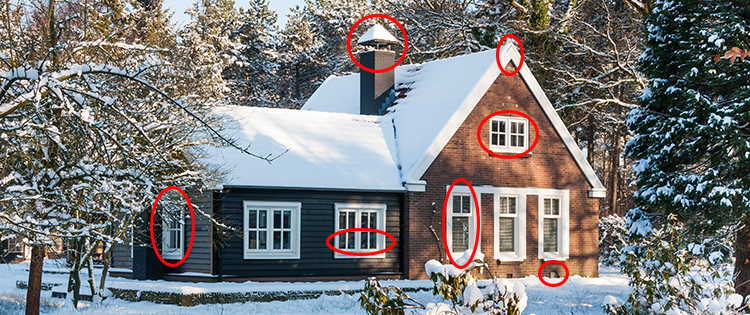








Thanks for the article. All I did to “prepare” for winter was to put some towels at the window sills :))
Air sealing is the most important thing you can do. Second is more insulation with an outside-vented attic.